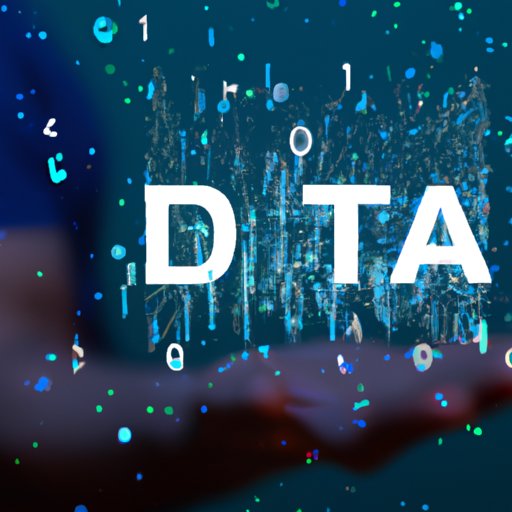
Exploring Graph Technology: A Guide for Beginners
Graph technology has been gaining more attention in recent years as a powerful tool to help organizations better store, analyze, and understand data. This guide will provide an introduction to graph technology and explore its benefits, applications, and challenges.
What is Graph Technology?
Graph technology is a type of database that stores information as a network of interconnected nodes and edges. Each node represents an entity such as a person, place, or thing, while each edge represents a relationship between two entities. By using graph technology, data can be easily visualized and analyzed to uncover meaningful insights.

Understanding the Basics of Graph Technology
At its core, graph technology is designed to represent the relationships between different entities. Nodes are used to represent entities, while edges represent the connections between them. For example, a social network might use nodes to represent users and edges to represent their connections. Graphs can also be used to represent other types of data, such as geographic data or financial transactions.
Graph databases are also known as “connected” databases because they are designed to store data in a way that allows for easy connections between related pieces of information. This makes it easier to find patterns and uncover insights that would otherwise remain hidden. For example, a graph database could be used to quickly identify relationships between companies and their customers, or between people in a social network.
The Benefits of Graph Technology for Big Data Solutions
Graph technology has become increasingly popular as a way to store and analyze large amounts of data. Graph databases are well-suited for applications involving complex data sets and dynamic relationships. They offer several advantages over traditional databases, including faster query times, improved scalability, and better data integrity.
Graph databases are also highly flexible and allow for easy customization. This makes them ideal for applications that require rapid changes in data or complex queries. Additionally, graph databases are well-suited for applications involving real-time data processing, as their distributed architecture allows for quick updates and efficient data retrieval.
How Graph Technology is Revolutionizing Data Storage and Analysis
Graph technology is transforming the way organizations store and analyze data. This technology is enabling organizations to quickly and accurately process large amounts of data and uncover valuable insights that would have otherwise remained hidden. Additionally, graph technology is revolutionizing the way machine learning algorithms are applied to data.

Unlocking the Power of Graph Technology for Machine Learning
Graph technology is becoming increasingly important for organizations looking to leverage machine learning algorithms. With graph databases, data can be quickly and accurately processed, allowing organizations to gain insights that would otherwise be impossible. Additionally, graph technology enables organizations to quickly update and refine their machine learning models as new data is added.
An Overview of Graph Technologies and Their Applications
Graph technologies are being used in a wide range of industries, from healthcare to finance. In healthcare, graph technology can be used to quickly identify potential drug interactions, while in finance it can be used to detect fraud or money laundering. Additionally, graph technologies are being used to improve customer experience and personalize marketing campaigns.
What is Graph Technology and Why Should You Care?
Graph technology offers many advantages over traditional databases, including faster query times, improved scalability, and better data integrity. Additionally, graph databases are highly flexible and allow for easy customization, making them ideal for applications that require rapid changes in data or complex queries. Finally, graph technology is revolutionizing the way machine learning algorithms are applied to data, allowing organizations to quickly and accurately process large amounts of data and uncover valuable insights.
Advantages of Graph Technology
Graph technology offers several advantages over traditional databases, including faster query times, improved scalability, and better data integrity. Additionally, graph databases are highly flexible and allow for easy customization, making them ideal for applications that require rapid changes in data or complex queries. Finally, graph technology is revolutionizing the way machine learning algorithms are applied to data, allowing organizations to quickly and accurately process large amounts of data and uncover valuable insights.

Examples of How Graph Technology is Used
Graph technologies are being used in a wide range of industries, from healthcare to finance. In healthcare, graph technology can be used to quickly identify potential drug interactions, while in finance it can be used to detect fraud or money laundering. Additionally, graph technologies are being used to improve customer experience and personalize marketing campaigns.
Challenges Associated with Implementing Graph Technology
While graph technology offers many advantages, there are also some challenges associated with implementing it. One of the biggest challenges is the complexity of setting up and managing a graph database. Additionally, graph databases tend to require more storage than traditional databases, and they may not be suitable for all applications depending on the specific requirements.
Conclusion
Graph technology is a powerful tool that can help organizations store, analyze, and understand data. It offers many advantages over traditional databases, including faster query times, improved scalability, and better data integrity. Additionally, graph technology is revolutionizing the way machine learning algorithms are applied to data, allowing organizations to quickly and accurately process large amounts of data and uncover valuable insights.
(Note: Is this article not meeting your expectations? Do you have knowledge or insights to share? Unlock new opportunities and expand your reach by joining our authors team. Click Registration to join us and share your expertise with our readers.)
